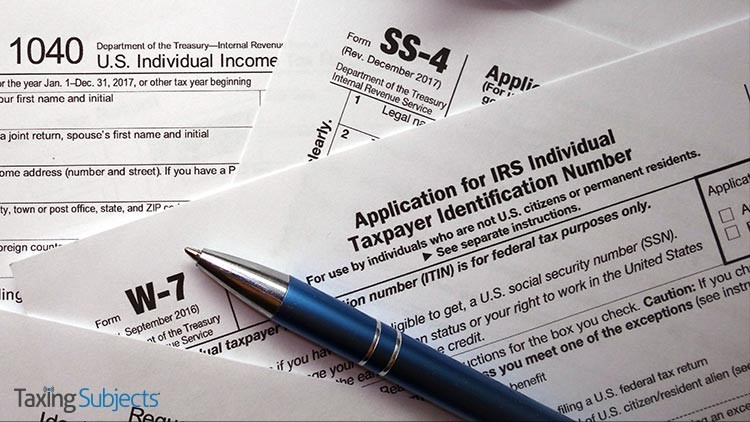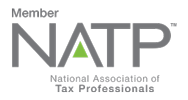
by Ambassador Tax Services, Inc. | Aug 18, 2020 | Tax Tips and News
Receiving a tax refund might be the only thing people like about filing their return, and it looks like some taxpayers are about to get just a little more money from the Department of Treasury.
The Internal Revenue Service today announced that it “will send interest payments to about 13.9 million individual taxpayers who timely filed their 2019 federal income tax returns and are receiving refunds.” As with seemingly everything else in 2020, this is a direct result of the coronavirus pandemic.
Why are 13.9 million taxpayers receiving a tax refund interest payment?
Federal law requires the IRS issue interest payments to taxpayers who file on time after a disaster postpones the filing deadline. In this case, the obvious culprit is COVID-19 pushing Tax Day back to July 15, 2020. But before people start exchanging socially distanced air high fives, there are a few things they’ll need to know:
- Interest payments will not be issued to businesses nor taxpayers who received their refund before April 15
- The interest payment will in most cases not arrive at the same time as the refund payment
- The average interest payment is $18
- The interest payment is taxable if it’s $10 or more
The longer it takes for a timely filed tax refund to arrive after the original deadline (April 15, 2020), the more interest the IRS will owe. And since the interest is calculated using the adjusted quarterly rate (compounded daily), that can sometimes result in using a blended rate for refunds that “span quarters.”
Here are the rates specifically cited by the IRS:
- 5% for the second quarter
- 3% for the third quarter
Interest payments affected by the blended rate will be calculated using “the number of days falling in each calendar quarter.” Perhaps making it a little easier to report a taxable interest payment, the IRS will send letters containing Form 1099-INT at the beginning of next year.
How are these tax refund interest payments being issued?
Taxpayers should generally expect to receive their tax refund interest payment the same way they received their tax refund: “In most cases, taxpayers who received their refund by direct deposit will have their interest payment direct deposited in the same account …. [and] everyone else will receive a check.”
As you well know, many people plan their finances based on the assumption that they will receive a tax refund every year. When everything feels like it’s up in the air, a little good news is welcome—even if it requires some paperwork.
Source: IR-2020-183
– Story provided by TaxingSubjects.com

by Ambassador Tax Services, Inc. | Aug 17, 2020 | Tax Tips and News
The Internal Revenue Service today recommended that taxpayers with an expiring Individual Taxpayer Identification Number renew it early to make sure their tax year 2020 refund isn’t delayed. Normally an important financial boost for households across the country, this announcement could help affected non-Social Security holding taxpayers better plan for another uncertain year.
Which ITINs are expiring?
The IRS explains that the Protecting Americans from Tax Hikes Act stipulates that any ITIN not used to file a federal tax return for three consecutive years will expire alongside those with the following middle digits:
- 88
- 90
- 91
- 92
- 94
- 95
- 96
- 97
- 98
- 99
That said, ITIN holders do not have to wait until their ITIN is expiring to renew. The IRS notes that families can even renew ITINs for everyone at the same time, meaning the Form W-7 renewal application can “include the tax filer, spouse, and any dependents claimed on the tax return.”
What are some ITIN-renewal tips?
The IRS identifies three ways taxpayers can renew their ITIN: by mail, with the help of a Certified Acceptance Agent, or by scheduling an appointment at an IRS Taxpayer Assistance Center.
As when filing any tax return, making mistakes can cause delays. That’s why the IRS recommends looking for these common errors before submitting the packet:
- mailing identification documentation without a Form W-7,
- missing information on the Form W-7, or
- insufficient supporting documentation, such as U.S. residency documentation or official documentation to support name changes.
Additionally, the IRS says it “no longer accepts passports that do not have a date of entry into the U.S. as a stand-alone identification document for dependents other than U.S. military personnel overseas.” Otherwise, applicants will need to provide the following documentation:
- U.S. medical records for dependents under age 6,
- U.S. school records for dependents under age 18, and
- U.S. school records (if a student), rental statements, bank statements or utility bills listing the applicant’s name and U.S. address, if over age 18.
For more information about renewing an ITIN, visit the “Individual Taxpayer Identification Number” page on IRS.gov or watch “Individual Taxpayer Identification Number (ITIN)” on YouTube.
Source: IR-2020-181
– Story provided by TaxingSubjects.com

by Ambassador Tax Services, Inc. | Aug 14, 2020 | Tax Tips and News
The Internal Revenue Service is reminding owners of most heavy highway vehicles to timely file their Form 2290, Heavy Highway Vehicle Use Tax Return.
The highway use tax applies to those motor vehicles with a taxable gross weight of 55,000 pounds or more. Generally, this includes large trucks, truck tractors and buses. The tax is based the weight of the vehicle.
A variety of special rules apply, but they are spelled out in the instructions for Form 2290.
The deadline for filing Form 2290 and paying the tax is Aug. 31 for vehicles used on the road during July.
If a taxpayer is unsure whether they have a requirement to file Form 2290, the IRS offers an online tool, “Do I Need to Pay the Heavy Highway Vehicle Use Tax?” The tool features a question-and-answer format that helps owners determine if they have to pay the highway use tax.
How does e-filing make it easier?
The IRS is encouraging all heavy highway vehicle owners to take advantage of the speed and convenience of e-file and to pay any tax due electronically.
Some taxpayers have an option of filing Form 2290 on paper, but those with 25 or more taxed vehicles must file Form 2290 electronically.
With Form 2290 e-filed and any tax due paid online, here’s no need to visit an IRS office. Visit IRS.gov for a list of IRS-approved e-file providers and to find an approved provider for Form 2290 on the IRS 2290 e-file partners page.
What are the payment methods?
There are two ways to pay the highway use tax electronically:
- Electronic funds withdrawal; authorize a direct debit as part of the e-file process.
- Electronic Federal Tax Payment System; allow five to seven business days for new accounts.
For now, the IRS says they cannot accept payment payment of the Heavy Highway Vehicle Use Tax by credit card or debit card.
To pay the use tax by mail, send a completed Form 2290 and a check or money order with Form 2290-V, Payment Voucher, to:
Internal Revenue Service
P.O. Box 932500
Louisville, KY 40293-2500
When Form 2290 is filed electronically, e-filers generally get their IRS-stamped Schedule 1 electronically, just minutes after filing and paying any Heavy Highway Vehicle Use Tax due online. They can then print the Schedule 1 and provide it to their state department of motor vehicles – all without having to visit an IRS office.
In 2019, the IRS received about 941,000 Heavy Highway Vehicle Use Tax Returns.
For more information about the highway use tax, check out the Trucking Tax Center at IRS.gov/trucker.
Source: IR-2020-179
– Story provided by TaxingSubjects.com

by Ambassador Tax Services, Inc. | Aug 12, 2020 | Tax Tips and News
The humble phishing scam is one of the oldest grifts in the Digital Age. Despite their age, these scams remain remarkably effective. Part of that success is derived from constant evolution, and the Security Summit is dedicating the fourth installment of its “Working Virtually: Protect Tax Data at Home and at Work” educational outreach to warning tax professionals about a raft of new scams that could soon fill inboxes.
Since COVID-19 forced many businesses to adopt some form of telework, the annual Security Summit event is focusing on remote-work data security tips for tax professionals. While previous weeks have emphasized the need for adopting newer data security tools like multi-factor authentication and Virtual Private Networks, this week goes back to the basics.
What is a phishing scam?
Phishing scams pose as a trusted sender to trick victims into providing personally identifiable information. While chain letters and phone calls are some of the oldest forms of phishing, email scams are probably the most prolific due to how easy they are to create and send. Here are two basic things to remember about phishing emails:
- Phishing emails often impersonate major retailers and people you know personally, and the IRS warns that they tend to have “urgent” subject lines, like “your account has expired.” For tax professionals, IRS Commissioner Chuck Rettig says that list often includes “a client, your software provider, or even the IRS.”
- Phishing emails often contain attached files or embedded links that install malware designed to steal your information or directly take over your accounts—whether by using stolen usernames and passwords or installing a type of remote-access malware.
One key takeaway is that you should never click on anything in these emails, and you should never send a response to the sender (regardless of how funny and satisfying that TED Talk is). Remember, these criminals are very skilled at tricking people into providing information via back-and-forth conversations. Instead, you should alert the proper authorities. In this case, that means starting by forwarding the email to the IRS scam-reporting email address: [email protected].
What are the NEW phishing scams targeting tax professionals?
New phishing scams are impersonating legitimate coronavirus resources, often “by presenting themselves as providers of face masks or personally protective equipment in short supply.” The IRS says that scams more focused on tax professionals have posed as current or potential clients asking for more information about Economic Impact Payments. And if another round of EIPs is signed into law this year, expect phishing scams tailored to that legislation.
How do I learn more about phishing scams?
The IRS.gov “Identity Theft Central” aggregates information related to all forms of identity theft, breaking down topics according to individuals, tax professionals, and businesses. Visitors will find links to the “Taxpayer Guide to Identity Theft” and the Security Summit’s “Taxes. Security. Together.” campaign, and it serves as an excellent starting point for learning more about identity theft. The Working Virtually press release also includes links to relevant documents:
Check back with us next week for the final installment of the Security Summit’s Working Virtually campaign.
Source: IR-2020-178
– Story provided by TaxingSubjects.com

by Ambassador Tax Services, Inc. | Aug 11, 2020 | Tax Tips and News
A new notice from the Internal Revenue Service gives companies that make and sell sport fishing or archery equipment more time to pay their quarterly excise taxes.
Notice 2020-55 says the relief was issued because of the COVID-19 pandemic.
The notice basically pushes some of the federal excise tax filing and payment deadlines back to Oct. 31, 2020. Taxpayers who owe federal excise tax on sales of archery or sport fishing equipment for the first quarter of the year will also see penalties and interest and additions to tax postponed as well.
What are the instructions for filing?
The IRS notice lays out specific instructions for affected taxpayers to take advantage of the relief measures:
- Any Affected Taxpayer that has not already filed a first quarter Form 720 that wants to take advantage of the postponement must file a paper Form 720, rather than an electronic Form 720, to file its return for excise taxes on sport fishing and archery equipment. An Affected Taxpayer should file only one Form 720 for the sport fishing and archery equipment numbers for the first quarter of 2020 by the postponed deadline of Oct. 31, 2020. In addition, an Affected Taxpayer must write “Notice 2020-55” on the top-center of the Form 720 on which its first quarter 2020 excise taxes on sport fishing and archery equipment are reported after Aug. 7, 2020.
- If any Affected Taxpayer that wants to take advantage of this postponement in filing is required to file a Form 720 for excise taxes other than for sport fishing and archery equipment on April 30, 2020, and has not done so, such an Affected Taxpayer should file a Form 720 reporting such excise taxes as soon as possible with the sport fishing and archery lines blank, to stop the further accrual of late filing penalties.
- Any Affected Taxpayer that wants to take advantage of the postponement must not combine first quarter (the calendar quarter containing January, February, and March 2020) with second or third quarter (the calendar quarters containing April, May, and June, and July, August, and September 2020, respectively) excise taxes onto one Form 720. Affected Taxpayers who are seeking the second quarter relief provided by Notice 2020-48 should follow the filing procedures described in that notice. Affected Taxpayers must file separate Forms 720 for the first, second, and third quarters by Oct. 31, 2020. Moreover, first, second, and third quarter Form 720 excise tax payments must be made separately, and Affected Taxpayers should clearly designate payments with respect to the type of tax and tax period for which the payment is made.
The IRS had previously put off some tax filing and payment deadlines associated with excise taxes for the second quarter of 2020.
Federal sporting goods excise taxes apply to fishing rods and poles, electric outboard motors, tackle boxes, quivers, bows, points and broadheads, and shafts. A portion of the money collected from these excise taxes is often used to finance conservation efforts in state and federal wildlife management areas.
The excise tax is reported on Form 720. First-quarter excise taxes are normally expected to be filed and paid by April 30 of the year. With the relief measures, however, the quarterly deadline has been delayed to Oct. 31, 2020
For more information on Notice 2020-55, call the IRS COVID-19 Disaster Relief Hotline at 202.317.5436.
– Story provided by TaxingSubjects.com










